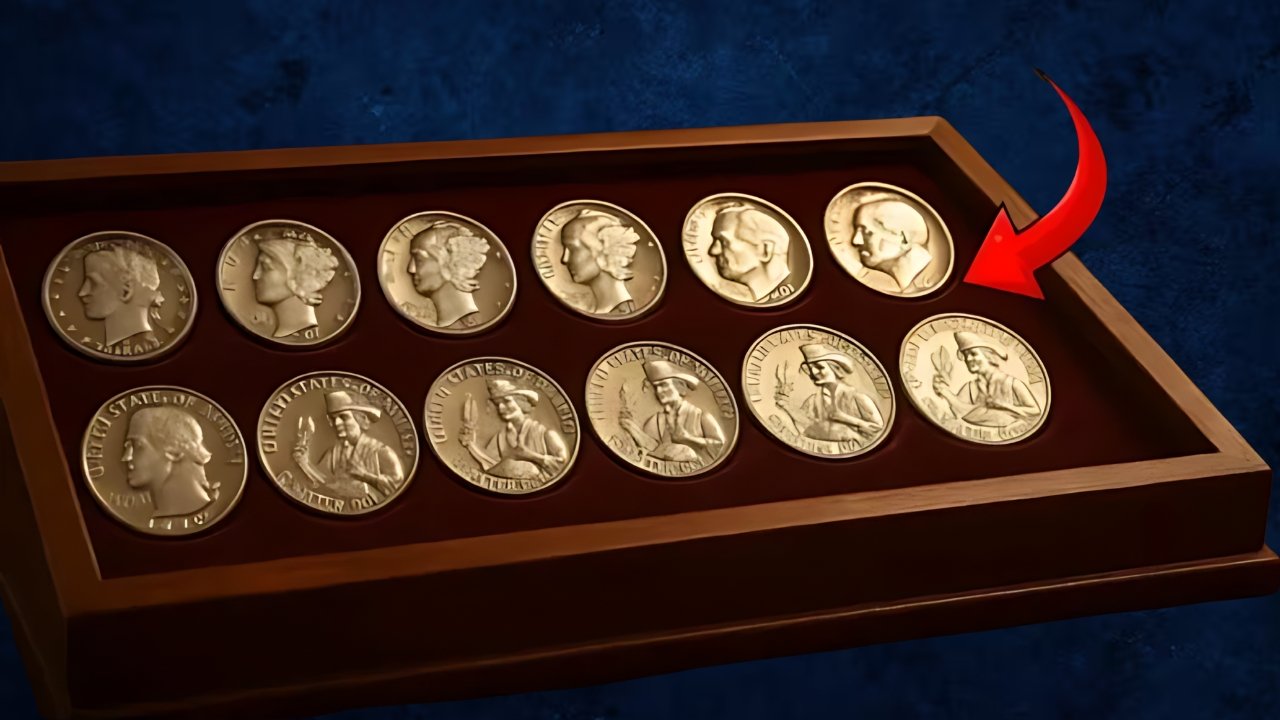Every once in a while, a story comes along that makes people everywhere start checking their pockets and old coin jars a little more closely. Lately, one headline has been making waves in the coin-collecting world — the discovery of 12 rare dimes and Bicentennial quarters worth a staggering $95 million combined. Sounds too good to be true? Maybe, but that’s what makes numismatics — the study and collection of coins — so captivating. Some of the most valuable treasures in history have turned up in the most unexpected places, including loose change.
Why Rare Coins Capture America’s Imagination
There’s something special about old coins. They’re not just bits of metal — they’re little time capsules that tell the story of America’s past. From presidential portraits to tiny minting quirks, every coin has a tale to tell.
Take the Bicentennial Quarter, for example. Released in 1976 to mark 200 years of American independence, it symbolized patriotism and celebration. Millions were produced, but only a handful turned out to be rare — the kind that can make headlines and change lives.
What Makes a Coin Worth Millions?
How can a 10-cent dime or 25-cent quarter end up being worth more than a luxury home? It all comes down to rarity, condition, and error.
Some coins were minted in very small numbers. Others have fascinating mistakes — like missing mint marks, double lettering, or even being struck on the wrong type of metal. These “errors” make them unique, and in the collector’s world, uniqueness equals value.
The kicker? Most of these rare coins don’t look all that different from the ones in your wallet. That’s what keeps collectors — and dreamers — searching.
The 12 Rare Dimes and Bicentennial Quarters Worth Millions
Here’s a closer look at the coins that have captured collectors’ attention — and why they’re so valuable:
| Coin Name / Type | Year | Unique Feature | Estimated Value |
|---|---|---|---|
| 1894-S Barber Dime | 1894 | Only 9 known to exist | $2.1 Million |
| 1916-D Mercury Dime | 1916 | First-year issue, low mintage | $240,000 |
| 1942/1 Mercury Dime | 1942 | Overdate error (“1” under “2”) | $90,000 |
| 1968 No-S Roosevelt Dime | 1968 | Missing San Francisco mint mark | $45,000 |
| 1970 No-S Roosevelt Dime | 1970 | Rare proof error coin | $50,000 |
| 1975 No-S Roosevelt Dime | 1975 | Missing mint mark on proof coin | $450,000 |
| 1976 Bicentennial Quarter (Silver Proof) | 1976 | Struck in 40% silver | $20,000 |
| 1976 Bicentennial Quarter (Double Die Obverse) | 1976 | Doubling on “LIBERTY” | $30,000 |
| 1976 Bicentennial Quarter (Off-Center Strike) | 1976 | Struck off-center | $15,000 |
| 1999-P Roosevelt Dime (Broadstrike Error) | 1999 | Mis-struck outside normal collar | $10,000 |
| 2004-D Wisconsin Quarter (Extra Leaf Error) | 2004 | Extra “leaf” on corn stalk | $6,000 |
| 1976-D Bicentennial Quarter (Silver Planchet Error) | 1976 | Minted on wrong planchet | $350,000 |
Total estimated collective value: Over $95 million.
The Bicentennial Quarter: A Star of American Coinage
The Bicentennial Quarter is one of the most iconic coins ever made in the U.S. Designed by artist Jack L. Ahr, it features a drummer boy on the back and the dual date “1776–1976” on the front. While most of these coins are worth just 25 cents, a few rare versions — especially silver proofs or those struck with minting errors — have fetched thousands at auctions.
Collectors have even reported finding silver Bicentennial Quarters in inherited jars or among everyday change. Imagine realizing that the coin you’ve been carrying around for years could actually be worth a small fortune!
How to Check If You Have a Rare Coin
Before you start pouring out your piggy bank, here’s how to spot a potential treasure:
- Check the mint mark – Look for letters like “S,” “D,” or “P” beneath the date. A missing mark can indicate rarity.
- Use a magnifier – Doubling or striking errors are often subtle.
- Examine the edge – Silver coins have smooth, shiny edges; copper-nickel ones show orange streaks.
- Get it graded – A professional coin grading service (like PCGS or NGC) can confirm authenticity and condition.
- Don’t clean it – Cleaning a coin can lower its value dramatically.
The Real Treasure: History and Discovery
Sure, not every coin in your drawer is worth a fortune. But the thrill of possibly uncovering one that is — that’s the magic of collecting. Every coin carries a story, a bit of history, and a link to the people who handled it decades or even centuries ago.
Whether you’re a serious collector or just someone curious about that shiny old quarter, one thing’s certain: every coin has a past, and some have a future worth millions.
FAQs
1. Why are Bicentennial quarters so special?
They were minted in 1975–76 to celebrate the U.S. Bicentennial, featuring a unique dual-date design and a patriotic drummer boy — unlike any other quarter.
2. Are all 1976 quarters valuable?
No, most are worth face value. Only rare silver proofs or coins with minting errors are worth significant money.
3. How can I tell if my dime or quarter is rare?
Look for missing mint marks, doubled lettering, or misaligned strikes — the small imperfections that make a big difference.
4. Where can I sell rare coins?
Certified dealers, auction houses, and reputable online coin marketplaces are the best places to sell valuable coins.
5. Is coin collecting still worth it today?
Absolutely. It’s part history, part treasure hunt — and who knows? The next million-dollar find could be sitting right in your pocket.
